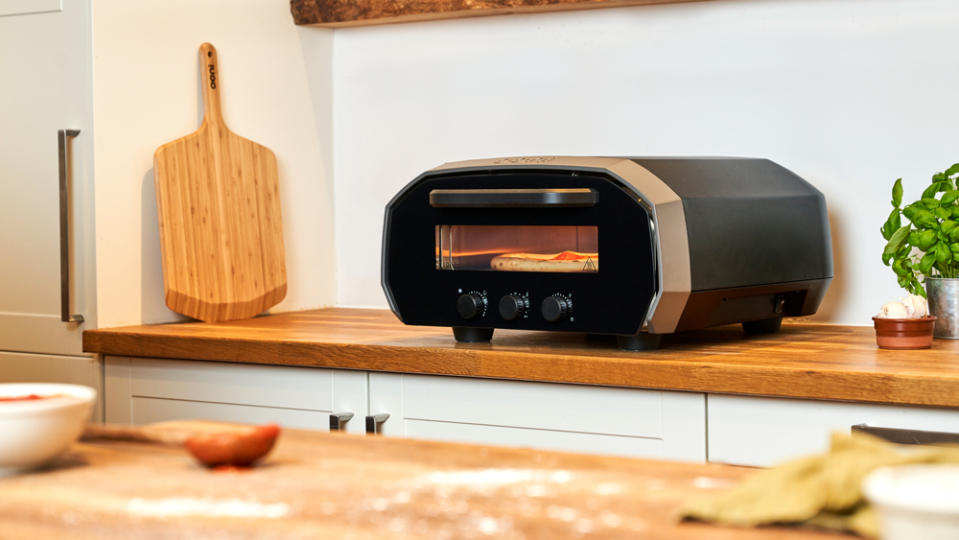Ooni Just Dropped a Pizza Oven You Can Actually Use Indoors—and It Heats up to 850 Degrees

If you purchase an independently reviewed product or service through a link on our website, Robb Report may receive an affiliate commission.
For the past few years, I’ve been on a journey to make professional-level pizza at home. I may be a step closer to my destination.
More from Robb Report
How to Make Fried Pork Chops, From the Team Behind Hit Brooklyn Restaurant Win Son
How to Make the Best Eggplant Parm, the Perfect Dish to Get You Through Winter
9 Stellar Wines to Drink With Your Pizza, From Italian Reds to Napa Cabs
I’ve been using pizza stones, pizza steels, outdoor pizza ovens and smart ovens with pizza settings, and I’ve had some success. But Ooni its new Volt 12 plug-in electric oven has helped me deliver some of my most exciting results to date. The Volt is a high-octane pizza oven that—unlike my gas-powered one—can actually be used inside, in the comfort of my own kitchen. This insulated little countertop box can get to a ripping-hot 850 degrees in 20 minutes, delivering me results I’ve never been able to achieve indoors—and even surpassing my gas-powered outdoor oven.
Because this oven is heated by electric coils and not a giant propane-fueled flame, it has a distinct advantage over the gas pizza ovens I’d used in the past. Those ovens could get screaming hot, but the top of the enclosure was always significantly warmer than the stone. With a coil above and below the cooking surface in the Ooni Volt, this allowed for more control of heat, especially from beneath. That means no more soggy bottom with a scorched top, a common affliction with my other cooking methods.
However, the Volt took some real getting used to. If you’ve been using a pizza oven or even a pizza steel under your broiler, the flames from above heat that surface and the stored energy radiates up through the dough. But because the stone or steel doesn’t generate heat itself, the dough cools it off and that’s why the top—still exposed to the flame—cooks faster than the bottom. However, the first time I tossed a pizza in the Ooni, that persistent heat from the bottom burned the hell out of my pie, even though the top looked perfect. So the first time you use the oven, it’s best to have a few spare balls of dough so you can dial in your technique.

Fortunately, you can calibrate the balance of the heat in the Volt, directing more energy to the top coil if the bottom is burning or vice versa. After some trial and error, I found the balance and the bottom of my pie was cooked better than I’d experienced with previous methods. And no matter how hot you crank it, the oven is so well insulated that you don’t have to worry about burning yourself if you touch the powder-coated carbon-steel shell.
There are a few quibbles with the Volt, one being that I wish it was just a little bit larger. I’ve become accustomed to making pizzas at a certain size that’s worked on Pizza Steel and my gas oven, but this tinier opening meant that my wood pizza peel couldn’t even fit in the Volt and the dough ball size I like to use is simply too big for the task now, creating a much breadier pie than the Neapolitan style I like to make.
Still, as I dial in the nuances of the oven, I’ve had some pretty impressive results. And though I’m not pro-level yet with the Volt, my neighbor remarked to me the other day when they came by that our home smelled like a pizza parlor. So maybe I’m closer than I think.
Best of Robb Report
Why a Heritage Turkey Is the Best Thanksgiving Bird—and How to Get One
The 10 Best Wines to Pair With Steak, From Cabernet to Malbec
Sign up for Robb Report's Newsletter. For the latest news, follow us on Facebook, Twitter, and Instagram.

